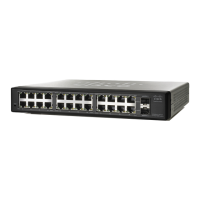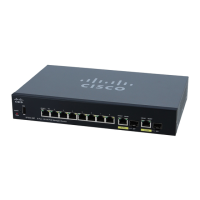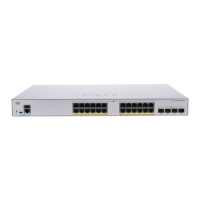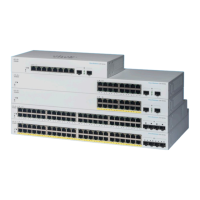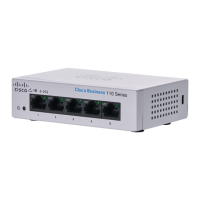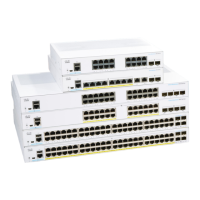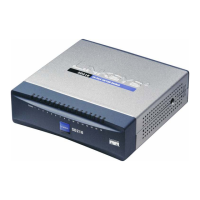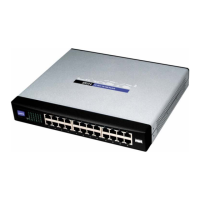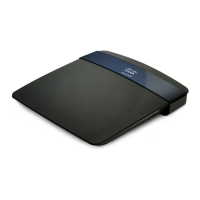IP Configuration
IPv4 Management and Interfaces
Cisco Small Business 200 Series Smart Switch Administration Guide 228
18
ARP
The device maintains an ARP (Address Resolution Protocol) table for all known devices that reside in the IP
subnets directly connected to it. A directly-connected IP subnet is the subnet to which an IPv4 interface of
the device is connected. When the device is required to send/route a packet to a local device, it searches
the ARP table to obtain the MAC address of the device. The ARP table contains both static and dynamic
addresses. Static addresses are manually configured and do not age out. The device creates dynamic
addresses from the ARP packets it receives. Dynamic addresses age out after a configured time.
NOTE The IP/MAC address mapping in the ARP Table is used to forward traffic originated
by the device.
To define the ARP tables:
STEP 1 Click IP Configuration > IPv4 Management and Interfaces > ARP.
STEP 2 Enter the parameters.
• ARP Entry Age Out—Enter the number of seconds that dynamic addresses can remain in the ARP
table. A dynamic address ages out after the time it is in the table exceeds the ARP Entry Age Out time.
When a dynamic address ages out, it is deleted from the table, and only returns when it is relearned.
• Clear ARP Table Entries—Select the type of ARP entries to be cleared from the system.
-
All
—Deletes all of the static and dynamic addresses immediately.
-
Dynamic
—Deletes all of the dynamic addresses immediately.
-
Static
—Deletes all of the static addresses immediately.
-
Normal Age Out
—Deletes dynamic addresses based on the configured ARP Entry Age Out time.
STEP 3 Click Apply. The ARP global settings are written to the Running Configuration file.
The ARP table displays the following fields:
• Interface—The IPv4 Interface of the directly-connected IP subnet where the IP device resides.
• IP Address—The IP address of the IP device.
• MAC Address—The MAC address of the IP device.
• Status—Whether the entry was manually entered or dynamically learned.
STEP 4 Click Add.
STEP 5 Enter the parameters:
• IP Version—The IP address format supported by the host. Only IPv4 is supported.
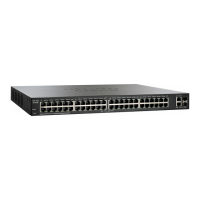
